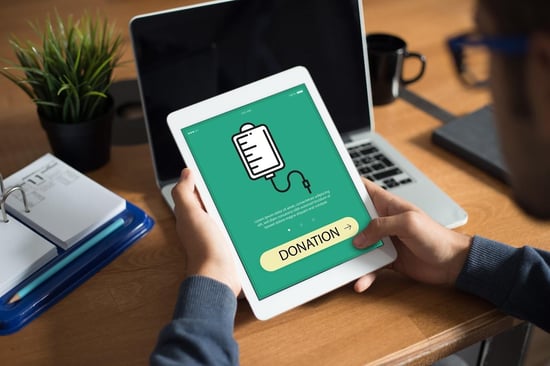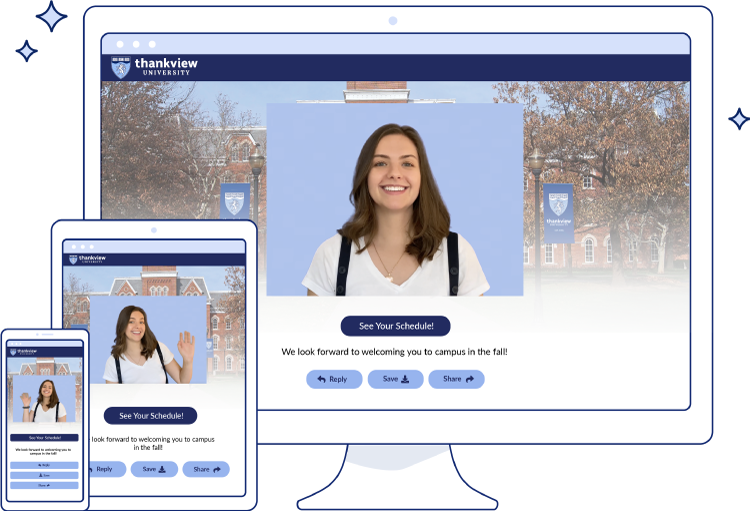8 Easy Steps To Create a Nonprofit Donor Stewardship Plan
Many nonprofits do amazing things with donor cultivation — the research, relationship building, and preparation that happens between acquiring a prospective donor and making your first ask. But stewardship picks up where cultivation ends, and it’s the step most nonprofits need to dedicate more energy to.
Donor stewardship includes the actions your nonprofit takes from the time of the donation until the donor no longer has a relationship with your organization. Stewardship is the relationship-building, communication, and appreciation you offer your donors.
With nearly 70% of new donors just making one-time donations, having a well-thought-out stewardship plan is essential to donor retention.
Does creating a stewardship plan for your nonprofit feel overwhelming? It doesn’t have to be! Here are eight clear steps you can take to create an effective stewardship plan.
1. Segment Your Donors for Increased Personalization
You can segment based on what your organization finds most important, but common segments include:
- Communication method preference: email, text, phone call
- Demographics: income level, location, age
- Donation specifics: frequency, total given, recency
Your emails to a donor who has contributed $25 annually for a decade should look different than your emails to major donors.
Why? Studies show donors are 63% more likely to click on a link within a segmented email.
Decide how your nonprofit should segment your donor base. Segmenting will help you drive even more personalization and better-timed communications.
Looking to increase your open rate? Personalized subject lines are 26% more likely to be opened. Use your segments to guide you in creating a detailed communication strategy sure to keep your donors engaged.
2. Use Technology To Build Relationships

There is no shortage of technology available to assist with your fundraising efforts. Because technology is always advancing, make a point to stay on top of the latest tools and trends.
Depending on the needs and budget of your organization, using some, or all of the options explored here may be beneficial.
Customer Relationship Management
Essentially a dashboard, your CRM can make tracking donations, contacts, and details a breeze! Monitor the volunteer activity, birthdays of donors, and even your donor’s likes/dislikes. Be sure to compare available features and pricing offered from the many available to best suit your needs.
Personalization
An initial email containing a video gets a click-through-rate increase of 96%! Improve your donor relations with a personalized greeting or thank you. Try recording thank yous from your board members directly! Whether it’s a simple yet sincere thank you or an update on how their donation has helped, hearing from your board members directly is sure to have a lasting impact on your donors.
Giving Options
Try using as many platforms as make sense for your organization: crowdfunding, peer-to-peer giving, or text-to-donate platforms can help you appeal to a wider range of demographics. Statistics show 51% of people who visit a nonprofit’s website do so on a mobile device.
3. Assign Giving Levels
Some organizations choose to identify giving levels and benefit categories based on traditional precious metals (gold, silver, bronze) or even just by donation amount itself ($50, $100, $200). You can even use verbiage tied directly to your mission or names of prominent members in your organization’s history.
For consistency in your appreciation, be sure to map out which types of communications and gifts each level receives. While you may send a thank you letter for every donation, a monthly donation of $200 may warrant different types of communications and gifts than a one-time donation of $10.
Promote it! Be sure to keep your donor levels and their perks available and visible so your current and prospective donors can see exactly what’s in it for them. Try featuring the details in your newsletters, social media posts, and other platforms for communicating with your donors.
4. Make It Easy
If your donation process is lengthy and complicated, your donors may be turned off — keep it simple! Be sure the donate buttons on your donation page are prominent and that your site is mobile friendly.
To encourage more matching contributions, consider adding a matching gift database to your donation page. Help your donors quickly check the donation matching participation and criteria for their employer. Don’t miss out on this extra source of revenue!
Mix up the ways your donors can contribute by offering traditional donations in a variety of suggested frequencies. Offering various types of fundraising events throughout the year can also help appeal to a broader selection of your audience.
5. Customization and Personalization

If you’re really looking to deepen your donor relationships, you’re going to want to get personal with your thank yous. “Dear Supporter” will not likely exist in an effective donor stewardship plan. Make your donors feel engaged and appreciated with personalization in your communications. Refer to them by their first or preferred name.
One tried-and-true method of donor appreciation is a traditional phone call. Hearing a “thank you” from a human voice can help build trust and engagement with your donors. Involve your board members with thank-you calls and handwritten thank-you letters.
Try sending personalized video messages to your donors on specific anniversaries or birthdays to let them know you appreciate them. Let them know they are not just another donor in a sea of names.
Is your organization active on social media? Use your platform to appreciate your donors and celebrate the impact of their gifts with your community. Create an online “honor roll” to publicly recognize the financial support.
6. Show Your Donors Their Impact
Help your donors feel appreciated by sharing how their gifts have helped and what they are supporting. After your immediate thank you, schedule a follow-up communication to share the details of how their gift helps your cause so they can see the value of their contribution themselves.
Use storytelling in your communications to increase their engagement. Help your donors see the full cycle of your mission, from ideas to action and results. Your donors will feel more aligned with your mission when they can put faces to names and show real-life results.
Publish your annual report to give even more transparency, building more trust.
7. Create a Communications and Outreach Calendar
Nonprofit organizations should have a solid communications schedule laid out to ensure your donor recognition and communications are timely and consistent from donor to donor.
You want to include everyone from first-time donors to major donors.
Thank-you letters are a clear first step but there are many other opportunities to reach out to your donors. Work in some of the options below to build deeper relationships with your donors:
- Birthdays
- Anniversaries
- Lapsed donation
- Invites to VIP events
- Volunteer outreach
- Newsletters
- Major gifts
8. Evaluate Your Stewarding Success
Schedule regular times throughout the year to internally evaluate your donor stewardship plan. Use your own internal data and discussion to assess where you can improve and what’s working well.
You don’t have to do all the heavy lifting though — send surveys to your major donors, volunteers, and staff to get their feedback.
Implementing your donors’ input is an invaluable tool to not just grow and improve, but to show them you truly value their thoughts and opinions.
Happy Stewarding!
Donors want to feel great about supporting your cause, and showing your appreciation can create deeper relationships with your current donors. Showing you care about your donors’ preferences throughout your stewardship process is essential to keeping your donor retention rates where they should be.
Use the steps above to take your donor stewardship program to the next level. Personalized communications throughout your stewardship can make the difference between a one-time gift and a lifetime supporter.
If you’re ready to see what adding more personalization can do for your stewardship plan, book a demo with our team today!
